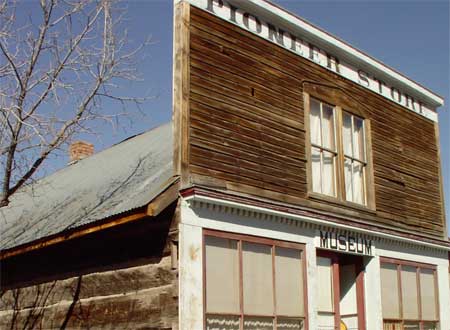 Chloride, N.M.
Chloride, N.M.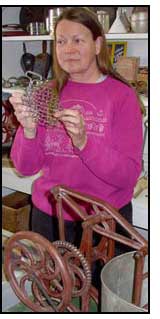 One of my favorite places to visit as a boy was the dusty crawl space of my home in Highland Park, Illinois. There I found old magazines, erector sets, cameras, movie projectors and electronic equipment that my family had collected over a lifetime. Some incredible family collectibles can be found when exploring basements, crawl spaces or attics of old homes.
One of my favorite places to visit as a boy was the dusty crawl space of my home in Highland Park, Illinois. There I found old magazines, erector sets, cameras, movie projectors and electronic equipment that my family had collected over a lifetime. Some incredible family collectibles can be found when exploring basements, crawl spaces or attics of old homes.
I felt a similar nostalgic joy when I recently visited The Pioneer Store Museum in the ghost town of Chloride, New Mexico, population 11, located 40 miles west of the city of Truth or Consequences. I was visiting Chloride with a group from Continuing 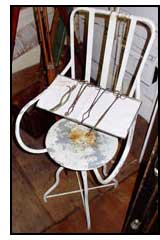 Education’s “Story of New Mexico” program.
Education’s “Story of New Mexico” program.
In 1880 prospector Harry Pye discovered silver chlorides in the nearby Black Range Mountains. Victorio, the Apache Indian Chief, soon found out about Pye and killed him for trespassing on his hunting grounds.
Word leaked out about the silver chloride and the area became inundated with prospectors and miners. By the mid 1880s, the entire canyon had become a boomtown of 3,000 people, complete with saloons, 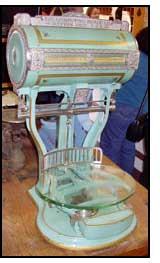 hundreds of buildings, a whorehouse and not a single church. Twenty years later, the price of silver dropped and the town was practically abandoned.
hundreds of buildings, a whorehouse and not a single church. Twenty years later, the price of silver dropped and the town was practically abandoned.
About 30 buildings still stand in Chloride. The most distinctive one was built of huge ponderosa pine logs in 1880 by James Dalglish, a Canadian. It served as a company store until it closed down in 1897. In 1908 the building was sold to the US Treasury Mining Company and was used as a commissary for their timber, mining and ranching crews.
The commissary went out of business in 1923 at which time the owners boarded up its windows and doors, leaving all its furnishings and merchandise inside. Perhaps the owners intended to reopen the store at a later date, but they never did come back.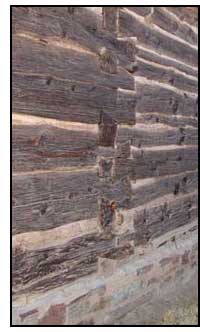
In 1989 retiree Don Edmond bought the building and its contents. Imagine the thrill that Don must have felt when he pried open the door of that building. He must have felt like he was entering King Tut’s tomb for the very first time! The place was covered in rat and bat droppings but nothing had been disturbed for almost 70 years.
Don has spent the last seven years cleaning the place up. He has restored the building and its contents and has made it into a museum. It’s not very big place, but a guided tour of the establishment, by Don and his daughter, was one of the most thrilling museum experiences I’ve ever had.
Not only did I see tools used for prospecting, mining and assaying silver ore, but I also saw kitchenware, dental equipment, scales and old ca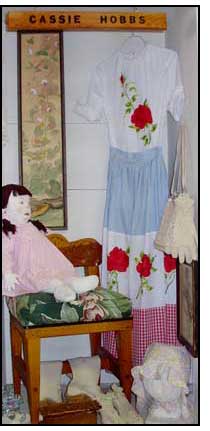 sh registers. I saw chain male (like the kind Knights used to wear) that had been used for cleaning pots and pans. Everything in the museum had an exciting story attached to it and these anecdotes were told to us, with great enthusiasm and sensitivity by curator Don Edmond and members of his delightful family.
sh registers. I saw chain male (like the kind Knights used to wear) that had been used for cleaning pots and pans. Everything in the museum had an exciting story attached to it and these anecdotes were told to us, with great enthusiasm and sensitivity by curator Don Edmond and members of his delightful family.
One of my favorite niches in the museum is a little display, a shrine really, set up to commemorate the life of resident Cassie Hobbs. This true frontier woman designed and sewed all her family’s clothes and built (with just four tools) all the furniture in her house. She fondly referred to her workshop as the “doodle dum.”
I also saw a casket built for a child, an e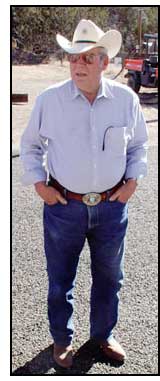 normous safe and a fireproof device used for preserving receipts. Everything was in pristine shape and I felt like I was not just visiting a museum, but was sent back into time on a visit to the local general store.
normous safe and a fireproof device used for preserving receipts. Everything was in pristine shape and I felt like I was not just visiting a museum, but was sent back into time on a visit to the local general store.
The word “museum” comes from the Greek Mouseion meaning shrine of the Muses. Webster defines museum as “an institution devoted to the procurement, care, study, and display of objects of lasting interest or value.”
The problem with most great museums is that they are, more often than not, a reflection of the tastes of the person who decided to build them rather than an open door into the past, present or future. I don’t think the public wants to 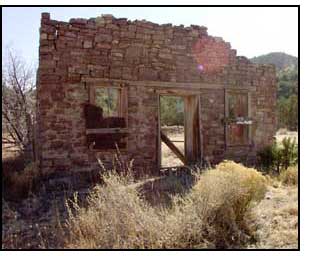 read boring labels and they have little patience for dry academic lecturing when they are on vacation.
read boring labels and they have little patience for dry academic lecturing when they are on vacation.
The Pioneer Store Museum is a truly great place to visit and should be regarded as a model for people who are attempting to display their collections to the public.
Thank you for visiting Chucksville.
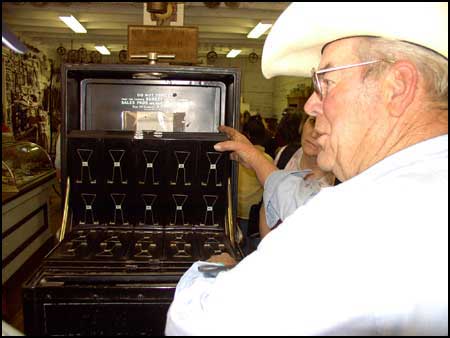
|
|


